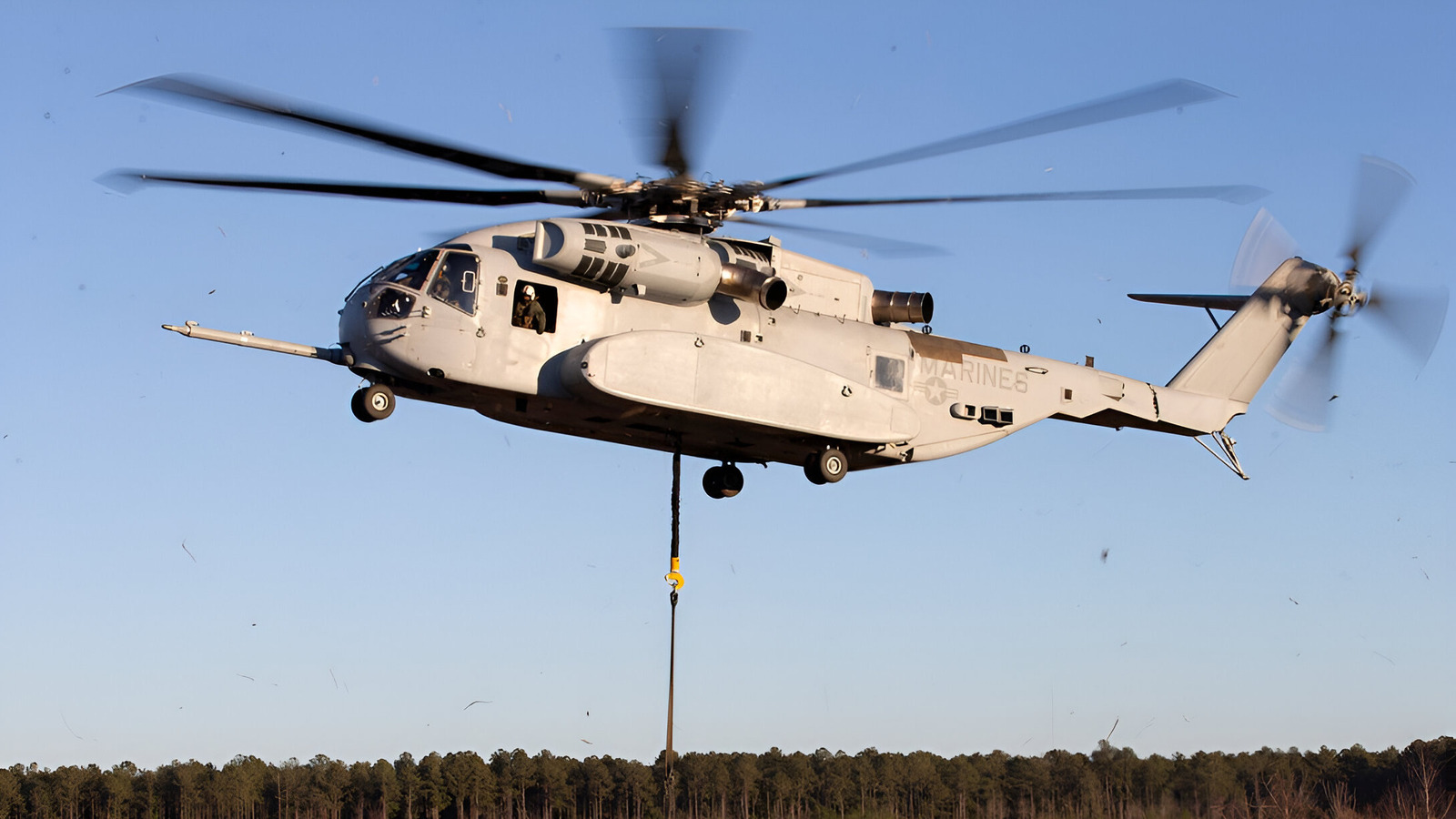Copyright SlashGear

For nearly six decades, the CH-53 heavy-lift helicopter — the largest operated by the U.S. military — has been a mainstay of the Marine Corps, in service since December 1966. The following year, first-generation CH-53A models arrived in Vietnam, thereby initiating the Marine Corps' long-standing reliance on this remarkable and iconic heavy-lift aircraft. Over the next several decades, the fleet evolved. The upgraded CH-53D models entered service in 1969, followed by the CH-53E "Super Stallion" series that arrived in the early 1980s. By August 2012, the then-aging CH-53Ds were retired after their last combat mission in Afghanistan. Today, while the CH-53E remains in service, the Marine Corps started the process of phasing them out in favor of the latest variant of the helicopter: the Sikorsky CH-53K "King Stallion". The latest "K" variant of the CH-53 reached initial operational capability in April 2022, and Sikorsky has been gradually delivering these machines to the Marines since then. Until early 2023, as many as nine helicopters had been delivered, with the count, as of late 2025, standing at 20. In September 2025, Sikorsky secured a five-year contract worth nearly $11 billion ($10.8 billion, to be precise) to build up to 99 CH-53K King Stallion heavy-lift helicopters for the Marines. These machines are expected to be delivered between 2029 and 2034, which aligns with the USMC's 2029 target to achieve "full operational capability" for this helicopter. Given that the King Stallion is dimensionally similar to its predecessors, what makes it so valuable is not its size, but its substance. This aircraft can lift over 36,000 pounds, nearly a third more than the CH-53E, while flying the same missions farther, safer, and with fewer maintenance hours thanks to its fly-by-wire controls, composite rotor blades, and next-generation GE T408 engines. The CH-53K might look nearly identical to the CH-53E from a distance, but under the skin, it's a thoroughly redesigned helicopter. It is now powered by three General Electric T408-GE-400 engines, which generate roughly 57% more power than the older T64 engines used on the Super Stallion, giving the King Stallion a maximum external lift of 36,000 pounds. These numbers mean that the CH-53K can carry a light armored vehicle, an M777 howitzer, or a pair of Humvees in a single sortie (one internally, and the second externally in lift mode). Its ability to haul 27,000 pounds of cargo for over 110 nautical miles in high/hot environments is triple what the CH-53E could move over the same distance. The CH-53K also gets digital fly-by-wire flight controls, which replace mechanical linkages with computer-assisted systems. The U.S. military asserts that this change reduces pilot workload in rough weather conditions, while also improving safety during low-visibility operations. In fact, this addition makes the CH-53K an easier-to-handle helicopter compared to its predecessor in adverse conditions. It should prove safer than its infamous predecessor. Maintenance and logistics have also been overhauled. The new design uses composite rotor blades with a low maintenance elastomeric rotor head. It also gets a corrosion-resistant airframe optimized for maritime environments. Improvements to its integrated health and usage monitoring system ensures that the mean time to repair a CH-53K is now 35% shorter compared to its predecessors. Inside, the cockpit now features an improved avionics management system as well as a modular open systems architecture. The latter will let the Marine Corps add features like tactical synthetic vision, weather avoidance systems, and cognitive decision aids as and when required. As outlined earlier, the CH-53K is dimensionally similar to its predecessor. It is 99 feet long and 17.5 feet wide, and boasts a maximum design gross weight of 88,000 pounds, which is significantly higher than that of its predecessor (69,750 pounds). It can travel at speeds of up to 170 knots (195 mph), and could fly up to altitudes of 16,200 feet. The customizable internal cabin of the CH-53K measures 30 feet in length, 5.6 feet in width, and 6.4 feet in height. The various flexible configurations in which it can be used include troop transport mode, cargo transport mode, mixed transport (troop/cargo), and medical evacuation mode. In the troop transport mode, the CH-53K can accommodate up to 34 people (two pilots, two crew chiefs, 30 troops). In the medical evacuation mode, the helicopter can quickly evacuate up to 24 patients in a single sortie. In the mixed cargo mode, the helicopter is equipped with folding seats. By choosing to evolve the CH-53 platform instead of replacing it outright, the U.S. Marine Corps has ensured that these heavy-lift giants will continue to be its heavy-lift helicopter of choice for the foreseeable future.



